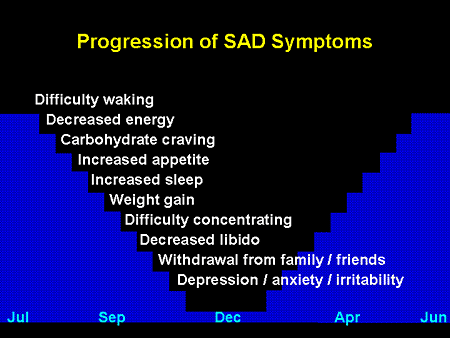Seasonal affective disorder not treated by 2800 IU of vitamin D (no surprise) – RCT
Vitamin D supplementation for treatment of seasonal affective symptoms in healthcare professionals: a double-blind randomised placebo-controlled trial.
BMC Res Notes. 2014 Aug 14;7:528. doi: 10.1186/1756-0500-7-528.
Frandsen TB1, Pareek M, Hansen JP, Nielsen CT.
1Department of Mental Health Services Esbjerg, Gl, Vardevej 101, 6715 Esbjerg N, Denmark. tennabf@gmail.com.
BACKGROUND:
Low serum 25-hydroxyvitamin D levels (25(OH)D) have been associated with a higher likelihood of seasonal affective disorder (SAD) and poor mental well-being, yet firm evidence for either remains lacking. Thus, vitamin D supplementation may alleviate symptoms associated with SAD.
METHODS:
This study was a randomized, single-centre, double-blind, placebo-controlled trial including healthcare professionals employed in psychiatric and somatic hospitals. 3345 healthcare professionals were invited to participate, 50 participants were screened, and 34 were able to complete the study. The main inclusion criterion was 8 points or more on question no. 2 of the Seasonal Pattern Assessment Questionnaire (SPAQ-SAD). During a 3-month period, the participants received a daily dose of 70 μg vitamin D or placebo. The primary outcome was the sum of the self-reported questionnaire Structured Interview Guide for the Hamilton Depression Rating Scale, Seasonal Affective Disorders (SIGH-SAD). The secondary outcome was World Health Organization-Five Well-Being Index (WHO-5) of the healthcare professionals during the winter period and the exploratory outcome measures were weight, waist circumference, blood pressure, absenteeism from work and 25(OH)D.
RESULTS:
There were no significant between-group differences in SIGH-SAD sums at 12 weeks (p = 0.7 (CI: - 3.27 to 4.81)). However, there was a significant improvement of primary SIGH-SAD over time from inclusion (autumn-winter) to the completion of the study (winter-spring) for all participants. The secondary and exploratory outcome measures were all insignificant between groups.The sums of the SIGH-SAD at 12 weeks were not significantly different [p = 0.701 (CI: 4.81-3.27)] between the groups. There was, however, a significant improvement in primary SIGH-SAD sums over time from inclusion (autumn-winter) to the completion of the study (winter-spring) in both groups. The secondary and explorative outcome measures were not significantly different between groups.
CONCLUSIONS:
There were no significant between-group differences in the primary (SIGH-SAD) and secondary (WH0-5) as well as the exploratory outcome measures (weight, waist circumference, blood pressure, absenteeism from work and 25(OH)D. Thus, the study failed to demonstrate an effect of vitamin D on SAD symptoms, but our findings may be limited by confounders. Furthermore, the study was underpowered and did not allow us to assess the ability of vitamin D to improve mood in those with low 25(OH)D.
TRIAL REGISTRATION:
( http://www.clinicaltrials.gov registration number: NCT01462058).
PMID: 25125215
📄 Download the PDF from VitaminDWiki
See also VitaminDWiki
Depression category listing has items along with related searches
"SEASONAL AFFECTIVE DISORDER" 97 items as of Nov 2015

